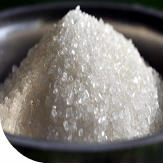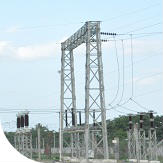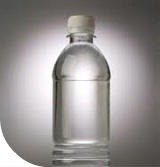Products
At Gayatri Sugars Limited special care is taken to ensure quality par excellence in it every product that adds value to its brand image.
Sugar
The sugar plants of Gayatri Sugars Limited are equipped with state-of-the-art technology and equipment to produce two different grades of high quality commercial sugar graded according to their color and grain size namely
-
S 30
-
M 30
Green Power
At a time when the world is witnessing a global power shortage, eco-sensitive Gayatri Sugar embarked upon the idea of co-generation of power which is an internal process. Over the years, Gayatri Sugars Ltd has been tapping power from Bagasse- an important byproduct of the sugar industry. With the move to co-generate power, we have aimed at achieving three advantages namely-
-
Additional revenue generation
-
Partly protecting ourselves from the cyclic nature of business/product life cycle namely Sugar, alcohol, molasses and bagasse.
-
The duration of crushing has been extended on the economics of co-generation even after sugar recovery falls to low and un-economic levels at the end of the season.
Distillary Products
-
In the year 2007, the company has commissioned its 50 KLPD (Licensed capacity) and Operating capacity of 45 KLPD Distillery unit to manufacture Rectified Spirit & ENA. In the year 2015-16, the Distillery unit modified to manufacture Ethanol instead of ENA.
-
During the Crushing Season 2020-21 for the first time, the company manufactured Ethanol directly from Cane Syrup to an extent of 20.00 lakh Liters
Hand Sanitizers
-
The COVID-19 outbreak among people brought a new awareness on the importance of using hand hygiene. As demand for hand sanitizers outstripped supply at the start of the pandemic, we commenced the production of hand sanitizers as a new product stream and launched the brand.
-
A hospital grade hand sanitizer, formulated with 83.33% Ethanol, 4.17% Hydrogen peroxide, Glycerin is a powerful sanitizer that has exceptional antimicrobial efficiency which effectively kills 99.99% of germs in less than 30 seconds. Hand Clean sanitizer is available in 500ml, 1000ml and 5000ml, suitable for individual use , Offices and homes.
Manufacturing Process:
-
SUGAR:
Raw Material = Sugar Cane
Main Products = White Sugar
By-products = Bagasse, Filter cake and Final Molasses
Chemical Used = Lime, Sulphur, Caustic Soda, Washing SodaThe process of Manufacturing of white sugar from sugar cane (Raw material) in Double Sulphuration Process involving passing through 5 main stations namely Milling, Boiling, Evaporation, Centrifugation and Packing.
During this process, white sugar is produced as the main product and Bagasse, Press-mud and Final Molasses are produced as the By-products.
Milling:
The raw material sugar cane is disintegrated by the preparatory devices and then subjected to crushing in the mills to extract maximum possible Sucrose in the form of juice from the sugar cane. After the extraction of juice, the by-product called “Bagasse” is used in the boiler as fuel for the production of steam. The steam in turn is used in the prime movers called Turbine for the production of electricity as well as for the driving of the Mills.
Boiling:
The juice thus extracted in the mills is stained, weighed and heated in the juice heaters to 65-70 oC. The heated juice is then subjected to liming and sulphitation (Chemical treatment) and again heated to 100-102 oC and pumped to the clarifier. In the Clarifier, the juice remains for a period of about 3 hours, in which time because of the chemical and heat treatments, most of the non-sugars settle down in the form of mud.
Evaporation:
The supernatant liquid called Clear juice is taken from the clarifier to evaporator in order to evaporate nearly 75% of the water present in the Clear juice. The material coming out of the Evaporator called Syrup is again subjected to So2 treatment in order to bleach the colouring matter and boiled in the Vacuum pans in three stages to crystallise maximum possible sugar from the syrup. The material after crystallisation in the Vacuum pans is called “Massecuite”.
Centrifugation:
The material coming out from the 1st Boiling is called “A” Massecuite, which is purged in the Centrifugal machines to separate sugar from the molasses. The sugar is then dried. The molasses thus separated from A-Massecuite in the Centrifugal machines is again boiled in the pan to get 2nd massecuite called “B-Massecuite”. This massecuite after centrifugation gives “B-sugar and B- Molasses is again boiled in the pan to get 3rd or final massecuite. The final massecuite gives C-sugar and final molasses after centrifugation. The C-sugar is used in B and as well as in A-boiling and the final molasses is sent out as a by-product and stored in storage tanks.
Packing:
The white crystal sugar in two sizes i.e.M30 & S30 will be packed in the gunny bags and the same is stored in the sugar godown. The final molasses is stored in the tank.
-
ETHANOL:
Various sections involved in the process of manufacture of alcohol are Molasses weighing, Fermentation section and Distillation.
Fermentation System:
The purpose of Fermentation is to convert the Fermentable sugars into alcohol during fermentation, sugars are broken into alcohol and carbon-dioxide. Significant heat release takes place during Fermentation.
Distillation System:
Multi pressure Distillation system for production of Ethanol. The columns operate on different pressures and temperatures. Wash is fed to the Analyser column top steam is applied on bottom of analyser R.S drawn from the pre-rectifier top. E.N.A draw from the simmering column bottom.
Bio-Digester:
The raw effluent will be initially treated in the Anarobic Digestor. In this process B.O.D & C.O.D are getting reduced by 85% and 70% respectively. The B.O.D & C.O.D concentration at the out let of Anarobic Digestor are 7500 mg/ltr & 30000 mg/ltr respectively.
Evaporation Plant:
The spent wash after Digestor containing 4% Solids is concentrated to 30% W/W solids in multi effect falling film evaporator duirng the process of evaporation 450 m3 water from spent wash gets evaporated and only 90 m3 /day concentrated spent wash will be going to lagoon.
Bio-Composing Method:
Rectified spirit (RS) and Extra Neutral Alcohol (ENA) are the main products during this process and Impure Spirit (IS) is the by product. The finished products of RS, ENA and IS are stored in the stainless steel tanks and the dispatches will be given from these tanks through issued Tanks. RS and ENA are Non-Excisable commodities. Is the excisable commodity. The procedure for sugar despatches will be followed for these products. The concentrated effluent coming from evaporators system is fed to the composting system. The process involves degradation of organic material with the help of press mud at ratio of 1:2.5 spent wash is sprayed on the windrows of press mud and mixed thoroughly with the help of a turning machine and used as manure.
-
POWER:
The steam is produced by Boilers required for generation of power and to meet the process requirement. Bagasse coming out from the Mills is used as Fuel to these Boilers.
The steam is passing through the Turbo-Alternators and producing the power. Part of the power is used for sugar production and RS production and the balance is exported to the TS GRID.



